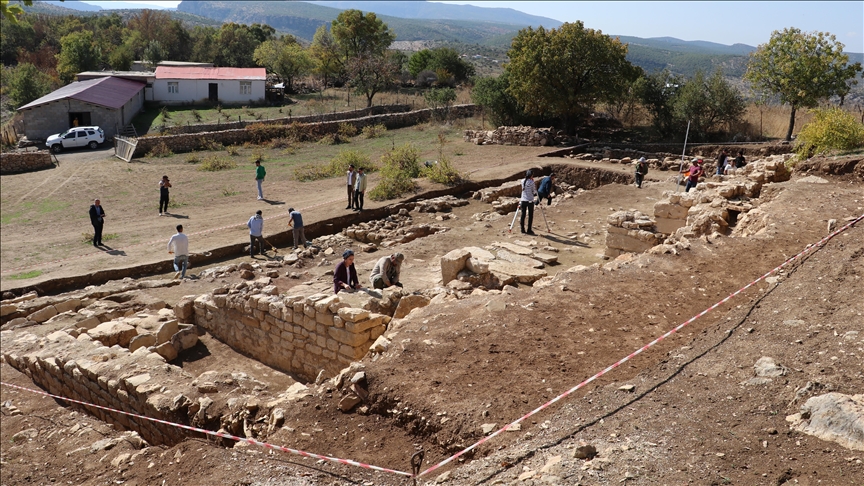DIYARBAKIR, Türkiye
Archaeologists unearthed the remains of a 1,500-year-old church housing 46 graves in southeastern Türkiye.
Excavations began in 2021 by the Diyarbakir Museum Directorate after the discovery of a coin dating to the period of Byzantine Emperor Anastasius I during a surface survey conducted in various areas in the Inkaya district of Diyarbakir province.
Ongoing excavations have yielded a treasure trove of artifacts, including coins, oil lamps, and columns. Notably, the focal point of efforts revealed the ruins of a structure.
Further investigations led to the identification of the structure as a church, with excavation teams uncovering a series of graves dispersed throughout the building.
Mujdat Gizligol, acting director of Diyarbakir Museum, told Anadolu that teams began excavations with the permission of the General Directorate of Cultural Heritage and Museums.
Stating that teams discovered a building that they did not think was a church ruin in the excavations, Gizligol said: “During the excavations this year, it was clearly understood that this is a Byzantine church. Our work here has accelerated. The church was probably used in the fifth, sixth and seventh centuries, then was destroyed, and was used as a cemetery until the 13th century.”
“Forty-six graves were found in the church. These are the graves of very different people, adults, children, women and men. The graves are spread throughout the church,” he said.
Kemal Atak, an archaeologist in charge of the field during excavations, dated the church’s foundation to the fifth and sixth centuries.
“The church ruins are more similar to the examples in Syria,” he said.

